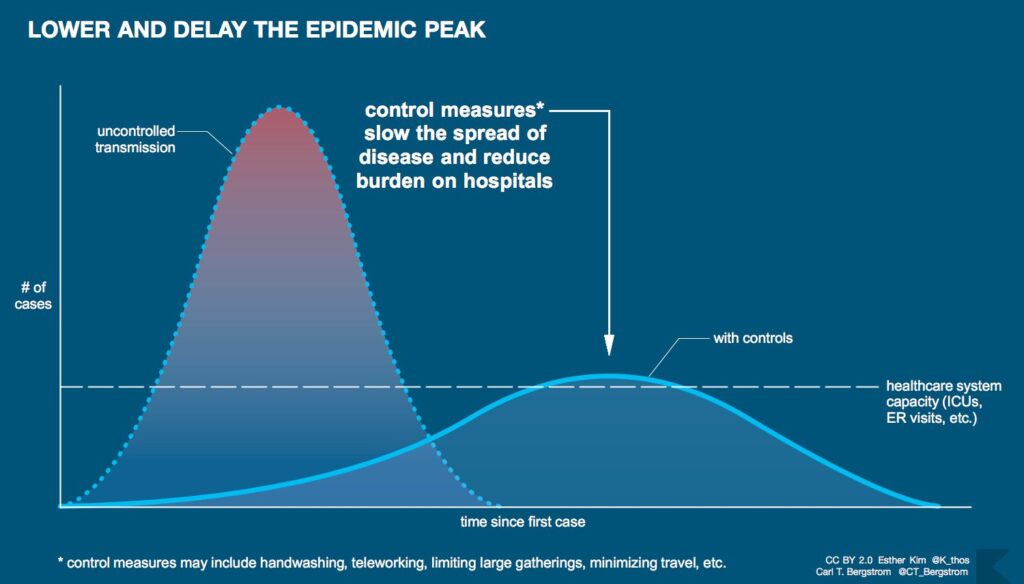Virtual Programming During a Pandemic, a guest post by Stacey Shapiro

Yesterday, the World Health Organization declared Covid-19 a pandemic. Online, I have seen many of my fellow librarians wrestling with what they should do and what we owe each other during this time. Today we have a guest post which outlines some ways we can engage in virtual programming to help participate in social distancing.
Maybe it’s already happened in your community: nearby, the COVID-19 virus has spread and directors have started cancelling programs to protect the community. And if it hasn’t, you may be asking why should we cancel programs if our neighborhood hasn’t been affected yet? The answer is to flatten the curve and prevent too many people from getting sick at once. The act of social distancing, or maintaining distance (approximately 6 feet) from others when possible, is meant to protect the most vulnerable in our lives, who may not look susceptible to illness at first glance.
ADVERTISEMENT
ADVERTISEMENT

“But my programming!” you might be thinking. With social media and the internet more widespread than ever, now is the perfect time to try virtual programming. It protects the most vulnerable in society during a global pandemic and prevents teens from spreading it to others in their lives. It’s also important to reassure teens that they are not likely to get coronavirus. We do not want to cause panic; the library is simply taking precautionary measures so that COVID-19 doesn’t spread farther. In that vein, a few ideas for online programming:
Online meetings for TAG groups
Although not possible for everyone, it’s a good way to practice social distancing. Instead of having the TAG congregate at the library, set up a Google Hangout at the regular TAG meeting time. Allow teens to email in questions or concerns to you ahead of time or during the meeting for those who can’t participate online. Take notes or assign a responsible TAG member to take notes and send out to your TAG list afterwards, with invitation to continue the discussion at a later date. For instance, my TAG is currently planning an Alice in Wonderland-themed tea party for this summer for younger children, and I need my teens to be able to participate in that and have creative ownership over the idea. This will allow them to participate but not be physically present in the library.
Online Reading Challenge
I’m fortunate that my library already has Beanstack, an online service that tracks reading that we’ve used for our summer reading program once already. In the next week or so, I’m hoping to set up a pre-summer reading challenge to encourage kids to read graphic novels, books, and audiobooks (also available for our patrons through Libby and Hoopla) to keep up circulation and promote the amazing YA books released during this time.
Online Gaming

One of my most popular programs is Game On, where I put out the library’s Switch and a collection of board games. Online gaming can be more dangerous in a way because you can’t confirm that you’d just be playing with teens from your area, but if the teens have parental permission to play, there are many free online games from Fortnite to Minecraft that you can play with teens across town. Simply set up a time, let them know the server or a way to find you and your username, and Game On is still on! Board games often have online versions as well, including Dominion, which you can play for free online here by signing up for a free account and confirming your email.
Social Media
I gave in. I got the library a TikTok. Will any teens follow it? I don’t know. Maybe I can convince the children’s librarian to do the Flip the Switch challenge with me, maybe no one will watch it. But it can also be a replacement for Snapchat, because Snapchat erases videos after 24 hours and it’s difficult to keep track of metrics there. (I also have a personal Snapchat, and it doesn’t allow you to switch between accounts easily the way Instagram does.) This is the time, however, to ramp up social media use. Promote library books, promote valid information, and always cite your sources.
(Disclaimer: I realize these options aren’t available to everyone, what with broadband access at home being what it is.)
What are you doing in your library? I’m interested! Email me at s-shapiro (at) cranfordnj.org.
Meet Our Guest Blogger

Stacey Shapiro is a YA librarian in New Jersey where she lives with her kitty, Cordelia, and is distracting herself with the thought that Animal Crossing comes out in just over a week. You can follow her on Twitter.
Filed under: Uncategorized
About Karen Jensen, MLS
Karen Jensen has been a Teen Services Librarian for almost 30 years. She created TLT in 2011 and is the co-editor of The Whole Library Handbook: Teen Services with Heather Booth (ALA Editions, 2014).
ADVERTISEMENT
ADVERTISEMENT
SLJ Blog Network
2024 Books from Pura Belpré Winners
Passover Postings! Chris Baron, Joshua S. Levy, and Naomi Milliner Discuss On All Other Nights
Winnie-The-Pooh | Review
Parsing Religion in Public Schools
ADVERTISEMENT








Terrific tips! Now is the time to stay even more connected and aware through technology. This will remove the feeling of isolation to a degree.